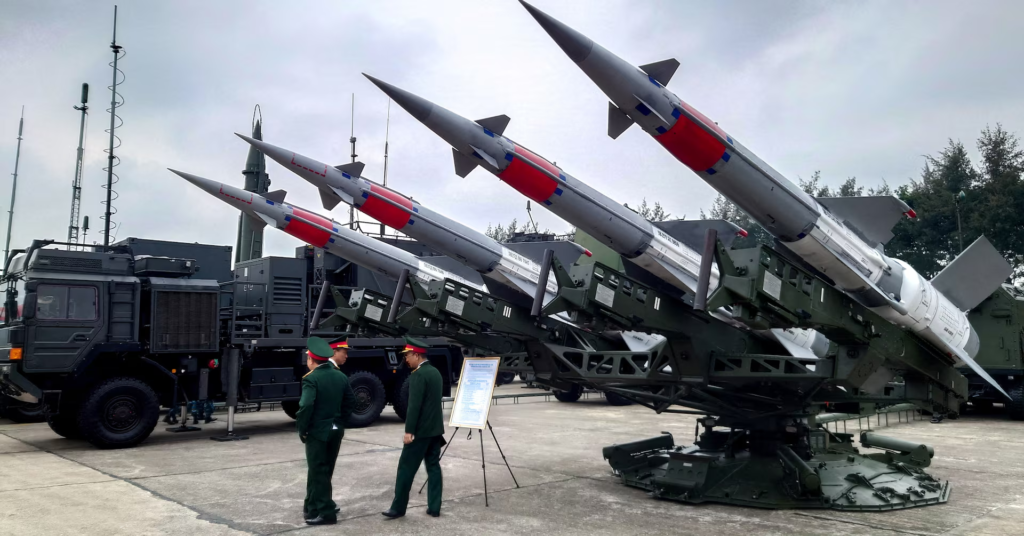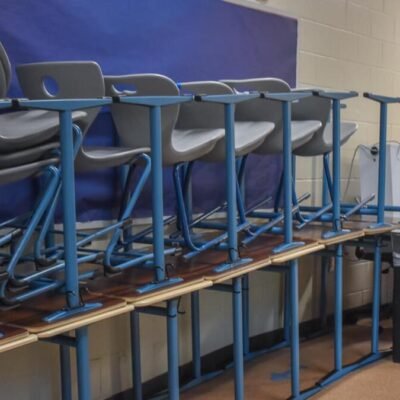Vietnam is expanding its defense partnership with the United States in a bold step to boost its economy and high-tech development. This growing alliance is not only about military cooperation but also about economic rebalancing, as Vietnam looks to reduce its reliance on China and become a leading tech hub in Southeast Asia.

On May 20, 2025, Vietnamese officials met with U.S. defense and commerce representatives in Hanoi to outline future cooperation. The talks focused on joint military exercises, cybersecurity, AI development, and high-tech trade initiatives.
According to the U.S. Department of Defense, this renewed collaboration is part of Washington’s broader Indo-Pacific strategy, aiming to create a “free and open Indo-Pacific” by building strong partnerships with regional allies like Vietnam.
High-Tech and Semiconductor Industry in Focus
A key highlight of the partnership is Vietnam’s push to develop its semiconductor industry. With tensions rising between the U.S. and China, American tech companies are seeking alternative supply chain bases in Southeast Asia. Vietnam is positioning itself as a prime destination.
The U.S. has pledged increased investments and tech transfers in sectors like semiconductor assembly, chip packaging, and AI R&D. In return, Vietnam will support intellectual property protection, provide skilled labor, and offer tax incentives.
According to a report from The Semiconductor Industry Association (SIA), the global semiconductor shortage has opened opportunities for emerging economies like Vietnam to enter the market.
Vietnamese officials are optimistic. “This is a chance to leap into the future,” said Nguyen Van Hung, Deputy Minister of Planning and Investment. “We aim to be Southeast Asia’s high-tech powerhouse.”
Economic Rebalancing: Moving Beyond China
For years, Vietnam’s economy has been closely linked with China. But as global supply chains shift, the Vietnamese government is keen to reduce dependency.
The U.S. partnership helps Vietnam diversify trade relationships while boosting its digital economy. By strengthening defense ties, Hanoi also gains strategic leverage in the South China Sea dispute, where China has been increasingly assertive.
Experts say the strategy is not anti-China, but pro-Vietnam. “It’s about balance,” said a senior advisor at the Asia Maritime Transparency Initiative. “Vietnam wants autonomy in its foreign policy and economic direction.”
Vietnam is already seeing gains. Exports to the U.S. rose 13% in the first quarter of 2025, led by electronics, garments, and furniture. The defense partnership is expected to accelerate this trend by increasing investor confidence and encouraging U.S. firms to relocate production from China to Vietnam.
Cybersecurity and Military Tech Collaboration
The defense talks also included discussions on military modernization, cybersecurity training, and weapons technology. While Vietnam remains cautious about foreign bases on its soil, it is open to joint naval exercises and cybersecurity infrastructure development.

The U.S. has agreed to provide technical support and cybersecurity tools to protect Vietnam’s defense and government systems.
In recent years, Vietnam has experienced multiple cyberattacks, allegedly linked to regional actors. Strengthening cybersecurity is now seen as crucial to both national defense and digital economy growth.
This initiative aligns with the broader U.S. vision for regional stability and digital resilience. The U.S. Indo-Pacific Command praised the cooperation, saying it marks “a new era of strategic engagement.”
Education, Workforce, and Innovation
Another major component of the partnership is talent development. The U.S. will support Vietnam in setting up STEM education centers, coding schools, and AI research hubs.
Scholarship programs will also be expanded, allowing Vietnamese students to study at leading American universities. The goal is to prepare a skilled workforce ready to lead the next phase of digital transformation.
American tech giants like Intel, Nvidia, and Apple have already started training initiatives in Ho Chi Minh City and Hanoi. This effort is expected to grow significantly in the coming years.
According to the World Bank, Vietnam needs to train over 1 million digital workers by 2030 to meet its development targets. The U.S. partnership is a step in that direction.
Political and Global Implications
This deepening relationship could reshape regional politics. As Vietnam aligns more with the U.S., it may impact its relations with China, Russia, and ASEAN nations.
However, Vietnam is expected to maintain its long-standing policy of non-alignment while engaging multiple partners. Its focus remains on economic development, technological growth, and peaceful diplomacy.
Experts view this as a “Vietnamese-style” modernization—strong on pragmatism, light on ideology. The defense ties with the U.S. offer tools, not entanglements.
Future Outlook: A Digital Powerhouse in the Making
Vietnam’s bet on defense diplomacy and high-tech development is bold, but the rewards could be transformative. With strategic U.S. support, Vietnam could become a digital and manufacturing leader in Asia.
Already one of the fastest-growing economies, Vietnam is on track to cross $500 billion GDP by 2026. The current moves show that the country is not only focused on short-term gains but building long-term capabilities.
From semiconductors to AI, from military tech to digital education—Vietnam is crafting a future that combines security and innovation.
If successful, the Vietnam-U.S. alliance may become a model for other developing countries looking to leap ahead in the global economy.
Also Read – Indonesia’s Bold Reset Unlocks U.S. Investment Goldmine






